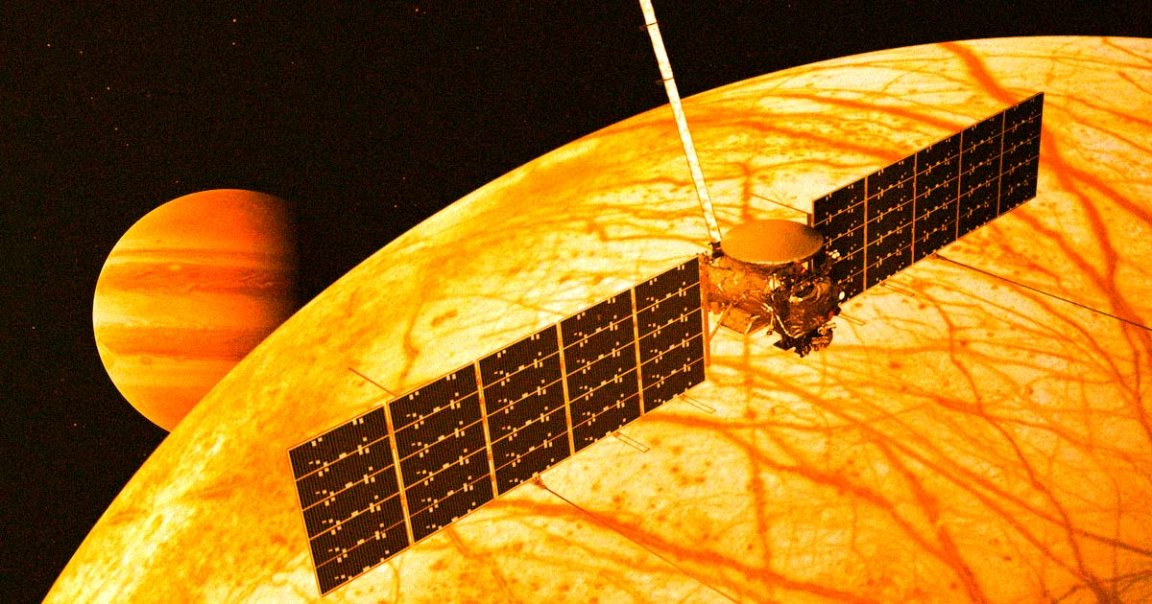
Alien Hunter
NASA’s Europa Clipper spacecraft is nearing its launch date.
The small probe is set to explore one of the most promising spots to look for extraterrestrial life in the solar system: Jupiter’s moon Europa.
It’s a tantalizing prospect. With ten science instruments on board, the space agency is hoping the spacecraft will determine once and for all if a suspected subsurface ocean hidden beneath an icy shell could be harboring life on the distant moon.
Most recently, the mission passed Key Decision Point E, the “last sort of big review before we really get into that launch fever,” as associate administrator for NASA’s Science Mission Directorate Nicola Fox told reporters on Monday.
The agency is eying a launch window that opens on October 10. But we’ll have to be patient until we hear more; its journey to Europa is expected to take 5.5 years.
Radiation Blast
The spacecraft will also have to endure massive amounts of space radiation during its journey, forcing engineers to come up with new ways to protect its electronics.
Jupiter’s magnetic field is a whopping 20,000 times stronger than Earth’s, making it a particularly challenging environment for technology.
“Jupiter’s engulfed in more radiation than any planet in our solar system, and that’s one of the reasons why exploring the Jupiter system is so challenging,” Europa Clipper project manager Jordan Evans told CNN.
“Europa sits near the outer edge of the worst part of that radiation belt,” he added.
Apart from being a particularly hazardous place, it also happens to be a prime candidate for places to look for signs of life.
“It’s a chance for us to explore, not a world that might have been habitable billions of years ago, but a world that might be habitable today,” Europa Clipper program scientist Curt Niebur told CNN, adding that Europa is an ocean world unlike “anything we’ve seen before.”
While it won’t be carrying any instruments that are capable of directly determining the existence of extraterrestrial life, NASA is hoping to use the spacecraft to spot the necessary ingredients of life as we know it.
If the agency does indeed discover these ingredients, it could be a huge deal.
“If we get there and we do this investigation, and the good news is it has all the ingredients and it is habitable, what that means is that there are two places in one solar system that have all the ingredients for life that are habitable right now at the same time,” Niebur said.
“Think of what that means when you extend that result to the billions and billions of other solar systems in this galaxy,” he added.
More on Europa: NASA Craft Hunting Alien Life Will Carry a New Message From Humanity